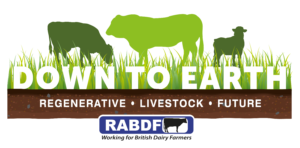How agroforestry is benefiting livestock and the land
Planting trees will help farmers on their journey to net zero whilst benefiting livestock and the environment, visitors to last week’s (6 July) Down to Earth event in Cumbria heard.
Graham Watson from Cumbria Community Woodland explained how many farmers were already integrating agroforestry into their livestock systems through a network of hedges surrounding field margins and trees already established in fields, for example. However, he said more trees could be planted, with government grants available to help support agroforestry.
He said the starting point was to plan the planting and apply for carbon credits. “There are many different ways to incorporate tree planting onto farms. You can implement alley cropping, where trees are planted in lines, allowing tractors to pass through. You can also plant field corners or consider areas of land that are less productive for planting. They can also be planted in fields in higher density planting or singularly depending on the purpose.”
The suggested number to plant will vary depending on a farm’s objectives, with a minimum of 30 trees per ha.
“By planting more trees, you are spreading the pressure of the stock when they are grazing,” he said.
The types of tree species planted will also depend on the farm’s objectives and location. “Oak, willow, ash, birch and crab apple are the main species. However, the Forestry Commissions Ecological Site Classification (ESC) will tell you the best species for your land,” he said.
Trees can provide health and welfare benefits to cattle, offering shade, shelter and feed, with some varieties, such as willow, thought to provide pain relief to livestock.
“They also help to improve water infiltration and slow water runoff,” he added.
